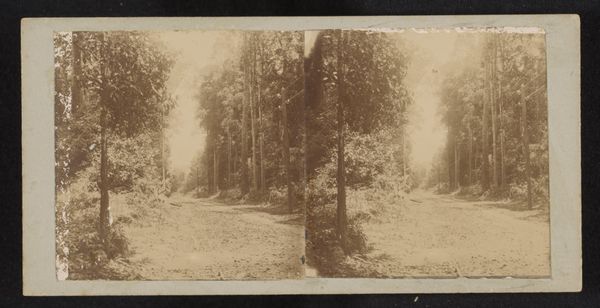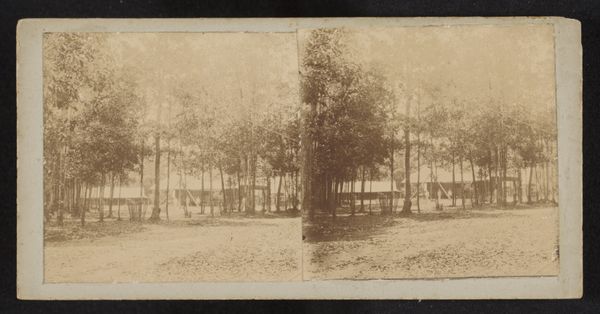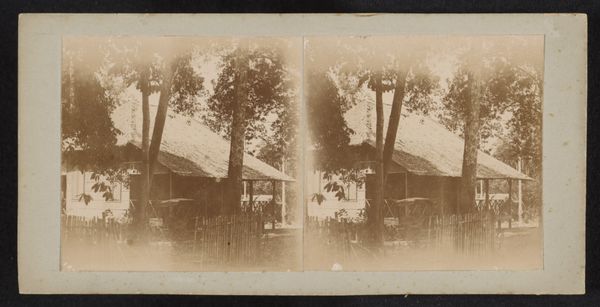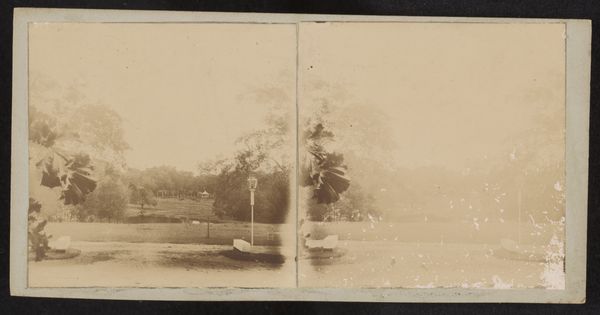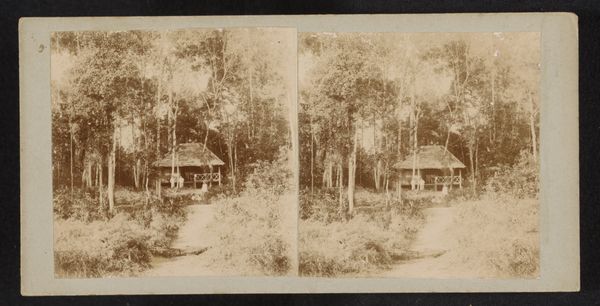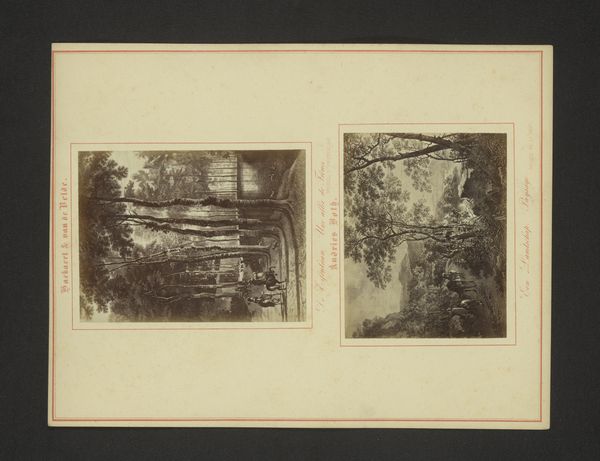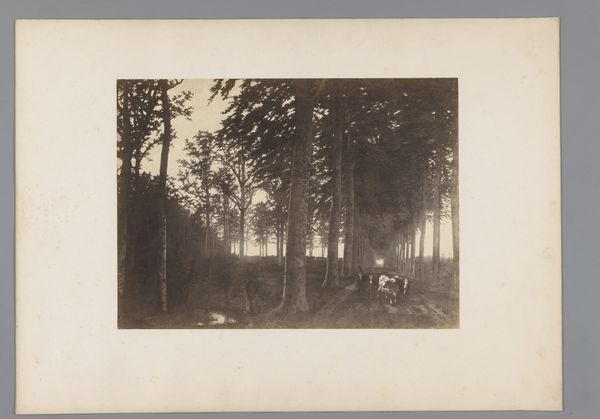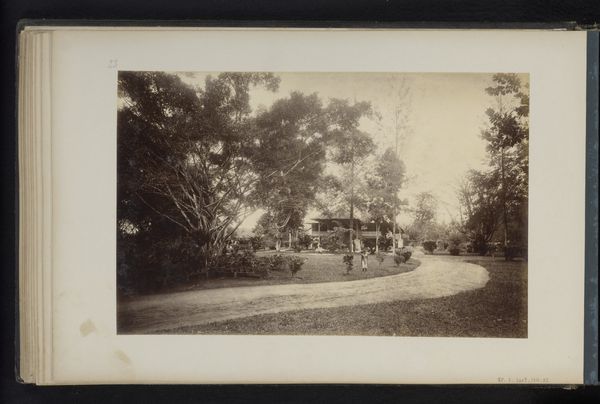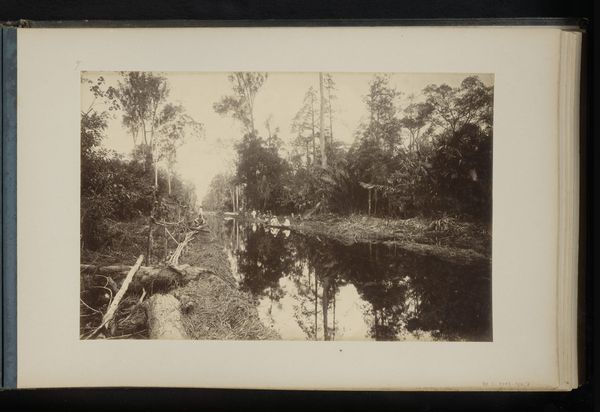
photography
#
pictorialism
#
landscape
#
photography
Dimensions: height 80 mm, width 80 mm, height 88 mm, width 178 mm
Copyright: Rijks Museum: Open Domain
Curator: Here we have Robert Julius Boers' "Weg naar Blinjoe," a photograph from the early 20th century. It depicts a tree-lined path, probably somewhere in the Dutch East Indies, based on Boers’ biography. Editor: The image immediately casts a spell, almost like looking into a dream, that kind of hazy sepia quality transporting you elsewhere, doesn't it? And, there's something melancholic about the scene itself. Curator: I think the Pictorialist style contributes to that. He’s manipulating the photographic medium to create a mood, much like a painter would, softened edges to give that ethereal feel. Look at the trees; they feel less like solid forms and more like figures in a memory. How do you perceive this pictorial technique in conjunction with his medium of photography? Editor: It’s quite curious, really. Photography, from a material standpoint, has always been about capturing reality. But here, Boers seems determined to subvert that, imbuing a manufactured atmosphere. The sepia tones were part of his work using gelatin silver prints. But also I can't ignore how much time was devoted in producing the albumen print - each photograph painstakingly labored over. How might his audience understand or critique Boers artistic intention given the sheer amount of effort in his work? Curator: That's fascinating—thinking about the labor involved to produce a work striving for atmospheric beauty. There is almost a disconnect to imagine a man taking time and materials to create work like this that serves no other purpose other than capturing and conveying mood. It begs the question, what labor is seen as valid, what labor as valuable and why. Do you notice that small carriage on the side? It almost acts as a focal point, an odd manmade presence in the overwhelmingly organic world, don't you agree? Editor: Indeed. The carriage complicates things. It subtly underscores a tension between the colonizer and the colonized land—labor and leisure of a certain kind in this "exotic" landscape. I’m increasingly drawn to considering what’s been removed, hidden or obscured. Perhaps he is only romanticizing exploitation... I find myself now struggling with such a conclusion. Curator: Precisely, the picture feels serene, a tranquil lane. Now knowing this undercurrent of something dark underneath, makes it all the more compelling to sit with for a moment longer. Editor: Well said. It is precisely this push and pull in examining materiality that lets us sit a bit uneasy.
Comments
No comments
Be the first to comment and join the conversation on the ultimate creative platform.
